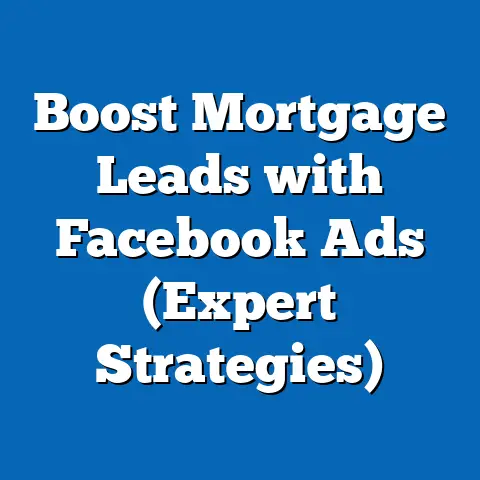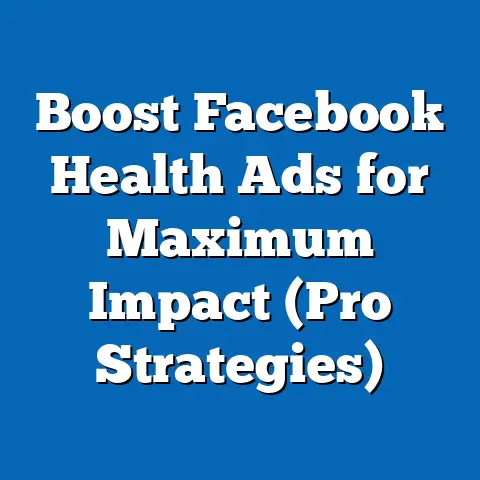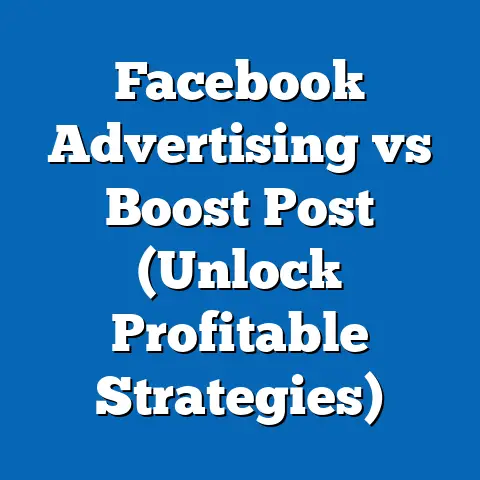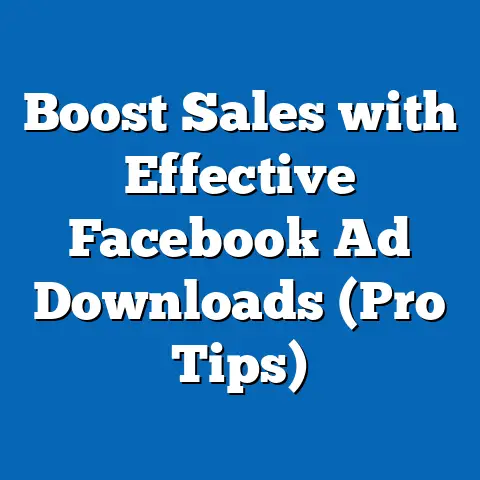Transform Block Pop-Up Ads on Facebook Android (Pro Strategies)
We’ve all been there. Scrolling through Facebook on our Android phones, and BAM! A pop-up ad appears, seemingly out of nowhere. The knee-jerk reaction for most of us, including myself, is to immediately close it. “Annoying!” we think. “Intrusive!” But what if I told you that pop-up ads, when executed correctly, can be a powerful tool for driving engagement and conversions on Facebook Android?
It’s true. The common misconception is that pop-up ads are inherently irritating and ineffective. This perception has led many marketers to shy away from them, especially on mobile platforms. However, I’ve witnessed firsthand how strategic pop-up ads can actually enhance user experience, provide real value, and ultimately, boost your bottom line.
Think of it this way: a well-timed, relevant pop-up is like a helpful store clerk appearing just when you need assistance. They point you to a great deal or offer information you didn’t even know you were looking for. This article will dive deep into the pro strategies you need to transform those potentially irritating pop-ups into engagement-generating, conversion-driving powerhouses on Facebook Android. Let’s shatter the myth and unlock the true potential of pop-up ads!
I. Understanding the Landscape of Facebook Ads
Facebook, without a doubt, is a giant in the digital advertising world. Its massive reach, detailed user demographics, and sophisticated targeting options make it a must-consider platform for any marketer. While Facebook offers a variety of ad formats – from image ads and video ads to carousel ads and lead generation forms – pop-up ads occupy a unique position.
These aren’t your typical website pop-ups. Facebook pop-up ads, often delivered through formats like Instant Experiences or Collection Ads, offer an immersive, full-screen experience that can be highly engaging when done right.
Why focus on Facebook Android specifically? The answer is simple: mobile dominance. The vast majority of Facebook users access the platform via their mobile devices, and Android holds a significant share of the mobile market. Ignoring Android users is like ignoring a huge segment of potential customers. By tailoring your pop-up ad strategy to Facebook Android, you’re tapping into a massive audience that’s increasingly using their smartphones for social media, browsing, and, most importantly, shopping.
Takeaway: Facebook Android is a crucial platform for marketers. Understanding the unique landscape of Facebook ads, including the potential of pop-up formats, is the first step to success.
II. The Psychology Behind Pop-Up Ads
Here are a few key concepts to consider:
- Urgency: Creating a sense of urgency (“Limited time offer!” or “Sale ends tonight!”) can compel users to take immediate action.
- Exclusivity: Highlighting exclusive deals or content (“Members-only access!” or “Be the first to know!”) makes users feel special and valued.
- Value Proposition: Clearly communicating the benefit of engaging with the pop-up (“Get 20% off your first order!” or “Download our free guide!”) provides a compelling reason for users to click.
It’s also crucial to understand how users perceive pop-ups on mobile devices versus desktop. On mobile, screen real estate is limited, and users are often on the go. This means that your pop-up needs to be even more concise, visually appealing, and immediately relevant to capture their attention.
In my experience, the key is to provide value upfront. Don’t just interrupt the user’s experience; offer them something worthwhile in exchange for their attention. This could be a discount code, a free resource, or access to exclusive content.
I’ve seen studies that show well-executed pop-up ads can increase conversion rates by up to 20%. The caveat, of course, is “well-executed.” A poorly designed or intrusive pop-up will only lead to frustration and a negative brand perception.
Takeaway: Understanding the psychology behind pop-up ads – urgency, exclusivity, and value proposition – is crucial for creating effective campaigns. Remember to tailor your approach to the mobile experience and always prioritize providing value to the user.
III. Designing Effective Pop-Up Ads for Facebook Android
Now let’s get into the nitty-gritty of designing pop-up ads that actually work on Facebook Android. This is where the rubber meets the road, and attention to detail can make all the difference.
Here are some pro strategies to keep in mind:
- Eye-Catching Visuals and Concise Messaging: On mobile, you have seconds to grab a user’s attention. Use high-quality images or videos that are relevant to your offer and visually appealing. Keep your messaging short, sweet, and to the point. Focus on the key benefit or value proposition.
- The Importance of a Clear Call-to-Action (CTA): Your CTA should be prominent, easy to understand, and tell the user exactly what you want them to do. Use action-oriented language like “Shop Now,” “Download Now,” “Learn More,” or “Get Started.” Make sure the CTA button is large enough to be easily tapped on a mobile screen.
- Mobile Optimization Techniques: This is non-negotiable. Your pop-up ad must be responsive and load quickly. Use optimized images and videos to minimize loading times. Test your ad on different Android devices to ensure it displays correctly. Nothing is more frustrating than a slow-loading or poorly formatted ad.
I’ve found that A/B testing different visuals and CTAs can be incredibly effective in optimizing your pop-up ad performance. Try different image styles, button colors, and wording to see what resonates best with your target audience.
It’s also important to strike a balance between aesthetics and functionality. While a visually stunning ad is great, it’s useless if it doesn’t convert. Make sure your design supports your message and makes it easy for users to take action.
Takeaway: Design is critical. Focus on eye-catching visuals, concise messaging, a clear CTA, and, most importantly, mobile optimization. A/B testing is your friend – use it to refine your design and maximize your results.
IV. Timing and Targeting: Key Factors for Success
Even the most beautifully designed pop-up ad will fail if it’s shown to the wrong people at the wrong time. Timing and targeting are the secret sauce that can transform a mediocre campaign into a high-performing one.
Timing:
- After a Specific User Action: Triggering a pop-up after a user has taken a specific action, such as viewing a product page or adding an item to their cart, can be highly effective. This shows that you’re paying attention to their behavior and offering them something relevant to their current needs.
- Time Spent on a Page: If a user has spent a certain amount of time on a particular page, it indicates that they’re interested in the content. This is a good opportunity to show them a pop-up offering additional information or a special deal.
- Exit Intent: While more common on websites, exit-intent pop-ups can also be used on Facebook Android to capture users who are about to leave a specific section or app. This is your last chance to grab their attention and offer them something compelling.
Targeting:
Facebook’s advanced targeting options are a marketer’s dream. You can target users based on:
- Demographics: Age, gender, location, education, and more.
- Interests: Hobbies, passions, and things they’ve shown interest in on Facebook.
- Behaviors: Purchase history, online activity, and device usage.
- Custom Audiences: Upload your own customer data to target existing customers or create lookalike audiences.
I once worked with a client who was struggling to generate leads for their online course. By implementing a pop-up ad targeted at users interested in online learning and professional development, they saw a 300% increase in lead generation within the first month. The key was showing the right message to the right people at the right time.
Takeaway: Timing and targeting are essential for maximizing the effectiveness of your pop-up ads. Use Facebook’s advanced targeting options to reach the most relevant audience and trigger your pop-ups at strategic moments.
V. Analyzing Performance and Making Data-Driven Decisions
Running a Facebook ad campaign is not a “set it and forget it” endeavor. It requires constant monitoring, analysis, and optimization. Tracking the performance of your pop-up ads is crucial for understanding what’s working and what’s not.
Here are some key performance indicators (KPIs) to track:
- Click-Through Rate (CTR): The percentage of users who click on your ad after seeing it. A high CTR indicates that your ad is relevant and engaging.
- Conversion Rate: The percentage of users who complete a desired action, such as making a purchase or signing up for a newsletter, after clicking on your ad.
- Cost Per Conversion (CPC): The average cost you pay for each conversion.
- Reach: The number of unique users who saw your ad.
- Frequency: The average number of times each user saw your ad.
Facebook Ads Manager provides a wealth of data and analytics that you can use to track the performance of your pop-up ads. Pay close attention to these metrics and use them to refine your targeting, messaging, and design.
For example, if you notice that your CTR is low, you might need to tweak your ad copy or visuals. If your conversion rate is low, you might need to improve your landing page or offer a more compelling incentive.
I’ve seen brands dramatically improve their pop-up ad performance by making small adjustments based on data. The key is to be data-driven and constantly experiment to find what works best for your audience.
Takeaway: Monitoring and analyzing your pop-up ad performance is crucial for optimization. Use Facebook Ads Manager to track key metrics and make data-driven decisions to improve your results.
VI. Avoiding Common Pitfalls in Pop-Up Advertising
While pop-up ads can be incredibly effective, they can also backfire if not implemented carefully. Here are some common pitfalls to avoid:
- Overly Aggressive Pop-Ups: Bombarding users with pop-ups every time they visit your page is a surefire way to annoy them. Limit the frequency of your pop-ups and make sure they’re triggered at strategic moments.
- Lack of Clarity in Messaging: If your messaging is confusing or unclear, users won’t know what you want them to do. Keep your messaging concise and to the point, and make sure your CTA is clear and easy to understand.
- Failing to Provide Value: If your pop-up doesn’t offer any value to the user, they’re unlikely to engage with it. Offer a discount, a free resource, or access to exclusive content to incentivize them to take action.
- Poor Mobile Optimization: As mentioned earlier, your pop-up ad must be optimized for mobile devices. Slow loading times and poor formatting will lead to frustration and a negative user experience.
- Irrelevant Targeting: Showing your pop-up ad to the wrong audience is a waste of time and money. Use Facebook’s advanced targeting options to reach the most relevant users.
I remember one campaign where the client insisted on showing a pop-up ad to every single user who visited their website, regardless of their behavior or interests. Unsurprisingly, the campaign performed poorly and generated a lot of negative feedback. Once we adjusted the targeting and limited the frequency of the pop-ups, the results improved dramatically.
Takeaway: Avoid common pitfalls by limiting the frequency of your pop-ups, ensuring clear messaging, providing value, optimizing for mobile, and targeting the right audience.
VII. Future Trends in Pop-Up Advertising on Mobile Platforms
The world of mobile advertising is constantly evolving, and pop-up ads are no exception. Here are some emerging trends to keep an eye on:
- Personalization: As AI and machine learning become more sophisticated, we can expect to see even more personalized pop-up ads that are tailored to individual users’ preferences and behaviors.
- Interactive Pop-Ups: Think beyond static images and text. Interactive pop-ups that incorporate quizzes, games, or augmented reality experiences can be highly engaging and memorable.
- Voice-Activated Pop-Ups: As voice search and voice assistants become more prevalent, we may see the emergence of voice-activated pop-ups that allow users to interact with ads using their voice.
- Native Integration: Pop-up ads that seamlessly blend into the user’s experience and feel like a natural part of the platform are likely to be more effective than intrusive, disruptive ads.
I believe that the future of pop-up advertising lies in creating more personalized, interactive, and seamless experiences that provide real value to the user.
Takeaway: Stay ahead of the curve by experimenting with emerging trends like personalization, interactive pop-ups, and native integration. The key is to continuously adapt your strategies to align with evolving consumer behaviors.
Conclusion
Pop-up ads on Facebook Android are not inherently evil. They’re a tool, and like any tool, their effectiveness depends on how you use them. By understanding the psychology behind pop-ups, designing compelling visuals, targeting the right audience, and analyzing your results, you can transform these potentially irritating interruptions into powerful drivers of engagement and conversions.
Don’t let the misconception that pop-up ads are ineffective hold you back. Embrace the pro strategies discussed in this article, and you’ll be well on your way to unlocking the true potential of pop-up ads on the Facebook Android platform. Remember, it’s all about providing value, respecting the user experience, and continuously optimizing your approach based on data. Now go out there and create some amazing pop-up ads!






